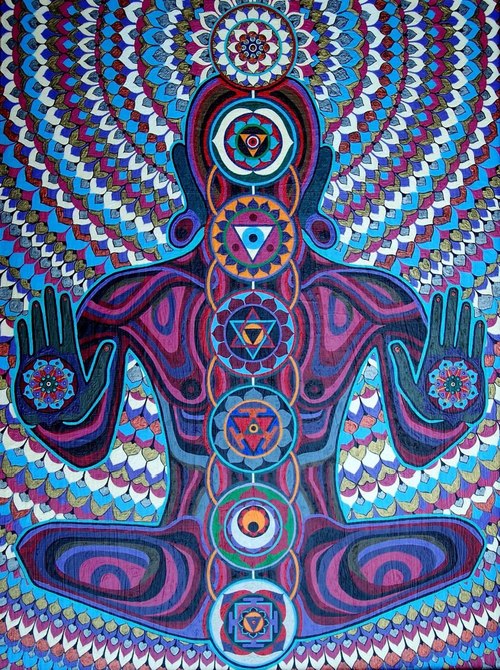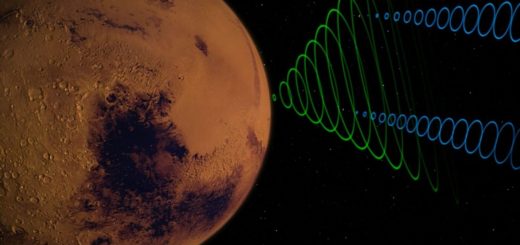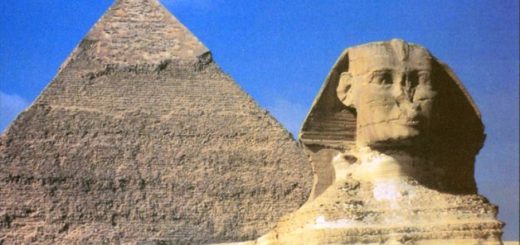Kundalini: The Symptoms of Human Awakening and the mystical connection to the cosmos

Sometimes translated as “coiled one” in the concept of Dharma, Kundalini refers to a form of primal energy (or shakti) said to be located at the base of the spine.
Kundalini is an energy that is latent in the human body at the base of the spine. When this force is “awakened,” it can be transposed up or downwards, along with the central axis of the body (the spine) to the crown or lotus in (SAHASRARA).
The Tantric tradition mentions the existence of seven energy centers, all stages or phases of the creation process. In Sanskrit, the adjective kundalin means ‘circular’ while in Tantrasadbhava Tantra the term means ‘ring, bracelet or coil.’ The Yoga Upanishads describe Kundalini as being ‘coiled’ at the base of the spine and is represented by a snake or serpent.
Like any energy of creation (prana, electricity, atoms) this energy too can be activated and even misused by those who are not spiritually motivated or have not completed this process and are therefore not free of personal patterns.
Numerous accounts describe the experience of Kundalini awakening.
When awakened, Kundalini is said to rise from the Muladhara chakra through the central Nadi (called Sushumna) inside or alongside the spine and reaching the top of the head.
The progress of kundalini through the different chakras leads to different levels of awakening and mystical experience until Kundalini finally reaches the top of the head, Sahasrara or crown chakra, producing an extremely profound transformation of consciousness—Swami Satyananda Saraswati India: Bihar School of Yoga. pp. 34–36.
Sometimes the Kundalini rises so that it goes beyond the top of the head. Once here, it provokes the appearance of a mystical state of consciousness, indescribable ecstasy, in which duality ceases.
Kundalini resides in the body of each person in the appearance of the Transcendental Power that precedes and accesses the entire Macrocosm—the whole of a complex structure, particularly the world or universe, contrasted with a small or symbolic part of it.
This power exists everywhere in the Universe. Kundalini awakening is said to emerge from deep meditation, and consequently enlightenment and bliss.
Matter, life, and consciousness are only different degrees (and with different frequencies of vibration) of the revelation of a sleeping power, Kundalini.
It is said that even in an atom, we can find evidence of Kundalini “budding” in the nucleus.
Furthermore, the divine power (MAHA VIDYA) encompasses the form of individual souls, limited in time and space, but also the form of matter, enveloping itself or, in other words, numbing.
However, transcendence is achieved, only when Kundalini ascends completely from the base to its ideal place in the head or beyond.
Like many other ancient spiritual teachings in the world, TANTRA YOGA looks at the human being as a true reflection of the macrocosm.
Universal, unlimited and unlocalized power is present in the human being.
When the Kundalini rises to the head, the beatitude is experienced and a very intense light is perceived. The light that accompanies the awakening of the Kundalini is one of the constants of the spiritual experience revealed by the mystics of all religious traditions.
In 1971, Gopi Krishna confirmed the following: “Whenever I direct my eye of mental knowledge to my inner being, I invariably perceive an bright light inside and outside of my head, in a constant and constant vibration, as if a brilliant and extremely subtle substance climbs up the spine and extends into and out of the skull, filling it and surrounding it with indefinable radiation.”
The Yogi tradition makes a differentiation between partial awakening and a total awakening of Kundalini energy.
While partial awakening can lead to multiple manifestations, both physical and mental, the full ascension of the Kundalini to the Sahasrara center will awaken the true impetus for the realization of God (or spiritual liberation) and will bring a much-desired revolution to consciousness.
Only then can the body transcend to the pure and perfect ecstasy of enlightenment.
The awakening of the power of the Kundalini is accompanied by different sensations and experiences.
There is a strong feeling of warmth (if the Kundalini wakes up and rises in Pingala Nadi) or a cold sensation (if the energy rises Ida Nadi) first through your back and then throughout the body.
The entrance of the Kundalini into the central spinal canal called Sushumna is accompanied by a specific feeling of unification that is felt at the level of the whole being and may even cause a lack of breath for a short period of time.
When the Kundalini reaches the Anahata Chakra, heart palpitations can be recorded.
There may be a tingling sensation in the fingers and sometimes the whole body begins to tremble.
As traditionally said, this can be perceived in the back of the head sometimes be as the slow walking of an ant, like the serpentine movement of a serpent.
All these signs are mentioned in the traditional scripts of Hinduism, especially those of Yoga and Tantrism. The sage and great yogi Ramakrishna, one of the greatest masters of mysticism in modern India, described his experiences with the Kundalini in almost similar terms.
Spiritual teacher Meher Baba emphasized the need for a master when actively trying to awaken Kundalini:
“Kundalini is a latent power in the higher body. When awakened it pierces through six chakras or functional centers and activates them. Without a master, the awakening of the kundalini cannot take any one very far on the Path; and such indiscriminate or premature awakening is fraught with dangers of self-deception as well as misuse of powers.
The kundalini enables man consciously to cross the lower planes, and it ultimately merges into the universal cosmic power of which it is a part, and which also is at times described as Kundalini…
The important point is that the awakened Kundalini is helpful only up to a certain degree, after which it cannot ensure further progress. It cannot dispense with the need for the grace of a Perfect Master.”— Beams from Meher Baba on the Spiritual Panorama.
It is said that once Kundalini awakens, it does not go back to sleep again. It may not be as strong as when it first erupted, but there are some who find that there is a definite ebb and flow with the experience over time.
In the long term, as Kundalini migrates throughout the subtle body making improvements and bringing into awareness several physical/emotional/spiritual issues the person needs to attend to, most people remark upon drastic shifts in their overall life experience.
These changes are never negative and are always in the best of interests of the person affected, but to some, especially those who awakened spontaneously with no prior knowledge of Kundalini, the long-term process can be daunting.
Source and reference:
Signs and Symptoms of a Kundalini Awakening
Biology of Kundalini
Beams from Meher Baba on the Spiritual Panorama
Kundalini – The Evolutionary Energy in Man by Gopi Krishna
Numerous accounts describe the experience of Kundalini awakening. When awakened, Kundalini is said to rise from the Muladhara chakra through the central Nadi (called Sushumna) inside or alongside the spine and reaching the top of the head. The progress of kundalini through the different chakras leads to different levels of awakening and mystical experience until Kundalini finally reaches the top of the head, Sahasrara or crown chakra, producing an extremely profound transformation of consciousness—Swami Satyananda Saraswati India: Bihar School of Yoga. pp. 34–36.



 Creators of mankind
Creators of mankind Description of “Tall white aliens”
Description of “Tall white aliens” Where they came from?
Where they came from? About hostile civilizations
About hostile civilizations The war for the Earth
The war for the Earth “Tall white aliens” about eternal life
“Tall white aliens” about eternal life Video: “Nordic aliens”
Video: “Nordic aliens” Aliens
Aliens Alien encounters
Alien encounters The aliens base
The aliens base UFO
UFO Technology UFO
Technology UFO Underground civilization
Underground civilization Ancient alien artifacts
Ancient alien artifacts Military and UFO
Military and UFO Mysteries and hypotheses
Mysteries and hypotheses Scientific facts
Scientific facts


















